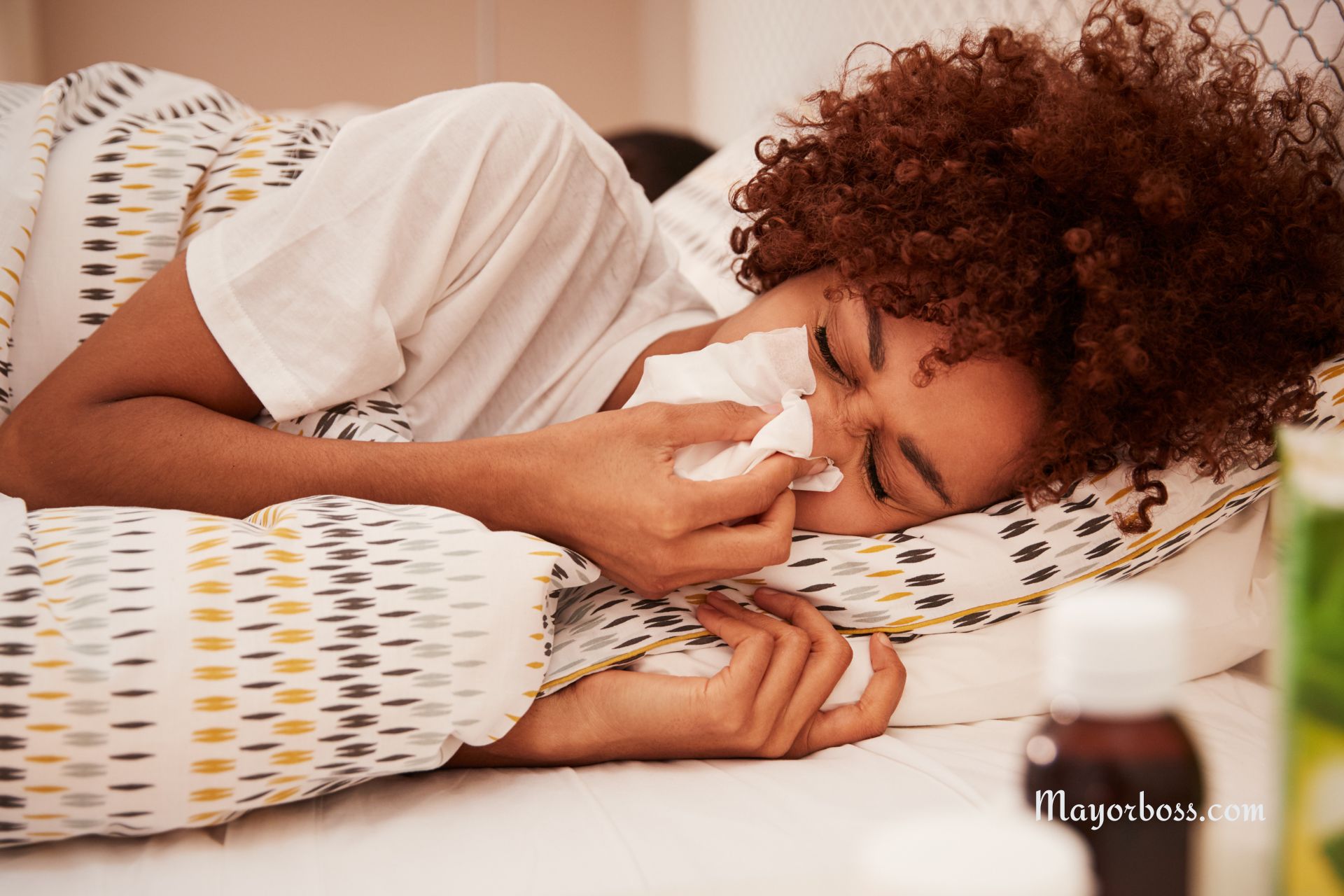What Is a Flushed Face?
What Is a Flushed Face?
A flushed face means your face turns red, often because of heat, emotion, or some medical conditions. While blushing from embarrassment is a common reason, other causes can include hot weather, spicy foods, or even certain illnesses. The redness can come and go, and it’s usually nothing to worry about. However, if it happens often or stays for a long time, it might be a sign that you should consult a healthcare professional.
Why Does Your Face Turn Red?
So, you’re standing there, and suddenly, your face feels warm and looks red. What’s happening? Well, blood is rushing to the vessels on the surface of your skin. This process is called vasodilation. You’ll often experience this when you’re hot, anxious, or have eaten something spicy. The body does this to release heat through your skin.

What Causes a Flushed Face?
Emotions
Feeling emotions like embarrassment, excitement, or anger can make your face flush. When you’re emotional, your body releases a hormone called adrenaline. This hormone sends signals to your blood vessels to open up, which makes your face red.
Weather Conditions
Hot and humid weather can also make your face flush. As you sweat, your body tries to cool itself down. Sometimes, it causes your blood vessels to expand and your face to turn red.
Food and Drinks
Have you ever had a spicy taco and felt your face go red? Spicy foods, as well as hot drinks, can trigger flushing. Alcohol can have the same effect, so think twice before going for that second glass of wine if you want to keep your face from turning red.
Exercise
Exercise is another common cause of flushed face; when you work out, your heart pumps more blood, including to your face.
Rosacea
If your face frequently turns red for no apparent reason, you might be dealing with rosacea. According to medical experts, this is a chronic skin condition that causes persistent redness, usually on the cheeks and nose. Treatment often involves creams, oral medications, and lifestyle changes.
Allergic Reactions
An allergic reaction can also cause your face to flush. If you’re allergic to something, your body releases a substance called histamine. This causes your blood vessels to widen, leading to facial redness.
Hormonal Changes
Women may notice facial flushing during certain times in their menstrual cycle. This is because hormone levels fluctuate, which can affect blood flow and cause redness.
Medications
Certain medications like blood pressure drugs, steroids, and even some acne treatments can cause facial flushing as a side effect. If you’re experiencing this, consult with your healthcare provider. They might adjust your medication or recommend an alternative treatment.
Carcinoid Syndrome
When you hear “carcinoid syndrome,” you might think it sounds serious. And you’re right. This is a rare condition usually linked to carcinoid tumors, mostly found in the gastrointestinal system. These tumors release chemicals into your bloodstream, one of which can make your face flush. If you notice flushing along with diarrhea and wheezing, consult a healthcare provider for a thorough diagnosis.
Hyperthyroidism
Your thyroid is a small gland that plays a big role in your metabolism. Sometimes, it can become overactive and produce too many hormones. This condition is known as hyperthyroidism. One of its symptoms? You guessed it: facial flushing.
Mastocytosis
This condition is rare but can cause a lot of symptoms, including facial flushing. Mastocytosis involves the accumulation of mast cells in your organs and tissues. These cells release histamine, which, as you know, dilates your blood vessels and turns your face red.
Menopause
For women, menopause is a time of significant hormonal changes. One of the many symptoms is hot flashes, which often come with facial flushing. So, if you’re a woman in your late 40s to early 50s and you’re experiencing frequent flushing, menopause could be the reason.
Autonomic Dysfunction
Your autonomic nervous system controls involuntary actions like heart rate and digestion. When it doesn’t function properly, you may experience symptoms like facial flushing, rapid heartbeat, and sweating. If you suspect this could be the case, medical evaluation is essential.
Cushing’s Syndrome
In this condition, your body is exposed to high levels of the hormone cortisol for a long time. While Cushing’s syndrome is relatively rare, one of its symptoms is facial flushing.
Alcohol Flush Reaction
Some people have a genetic inability to properly metabolize alcohol, which results in flushing. It’s often called the “Asian flush” because it commonly affects people of Asian descent. However, it can occur in people of any ethnicity.
Pheochromocytoma
This is a mouthful, but it’s another rare condition that can cause your face to turn red. Pheochromocytoma is a tumor of the adrenal gland, which can release hormones that induce flushing, among other symptoms.
Niacin Overdose
Taking too much niacin, also known as vitamin B3, can also cause facial flushing. According to healthcare providers, this is usually harmless and goes away on its own, but it can be uncomfortable.
Symptoms of a Flushed Face
A flushed face isn’t just about your cheeks turning the color of a ripe tomato. There are other signs and symptoms you might experience. Sometimes, it’s just mild redness, but other times, you might feel like your face is on fire. Here’s what to look for:
Redness
The most obvious sign is a red or pink hue appearing on your face. You might notice it on your cheeks, forehead, or even your neck.
Uneven Skin Tone
When your face flushes, the redness doesn’t always spread evenly. So you might notice patches of red here and there, especially on your cheeks or nose.
Bloodshot Eyes
Sometimes, the blood vessels in your eyes might expand, making your eyes appear bloodshot or red.
Warmth
When you’re flushed, your face often feels warm or hot to the touch. If you place your hand on your cheek, it might feel like you’ve spent too much time in the sun.
Tingling or Itching
As your face turns red, you might feel a tingling or itching sensation. This is especially common in cases of allergic reactions or skin conditions like rosacea.
Tightness
Your skin might feel tight, almost like it’s being stretched. This can happen when the blood vessels expand rapidly.
Throbbing or Pulsing
You might also feel a throbbing or pulsing sensation in your face. This is your heart pumping blood more vigorously, especially if you’re flushed due to physical exertion or excitement.
Sweating
Flushed skin often comes with sweating, especially if the cause is heat or physical activity. You might notice a sheen of sweat on your forehead or upper lip.
Rapid Heartbeat
Sometimes, a flushed face can be accompanied by a quickened heartbeat. If you feel like your heart is racing, it’s likely related to the same cause as your facial flushing.
Shortness of Breath
In more serious cases, especially if flushing is due to a medical condition or allergic reaction, you might experience shortness of breath.
Nausea
Feeling queasy? Sometimes, flushing can make you feel nauseous, especially if it’s related to an underlying medical condition or a reaction to medication.
When Should You Be Concerned?
Persistent Redness
If your face stays red for a long time, or if it happens frequently, you might want to check with a healthcare professional. Conditions like rosacea or certain allergies could be the culprits.
Accompanying Symptoms
Now, if you also have symptoms like itching, pain, or swelling, don’t ignore them. These could be signs of an allergic reaction or other medical issues that may require attention.
How to Manage a Flushed Face
Cool Down
If heat is the problem, try cooling down with a fan or some cold water. You can also use a cool compress on your face to reduce redness.
Avoid Triggers
Once you know what causes your face to flush, avoiding these triggers can help. For instance, if spicy food makes you red, you might want to skip the hot sauce next time.
Over-the-Counter Solutions
According to dermatologists, some over-the-counter creams and gels can help reduce redness. Look for products that contain ingredients like aloe vera or chamomile for best results.
Frequently Asked Questions About a Flushed Face
Why Does My Face Turn Red When I Exercise?
When you exercise, your body produces more heat. To cool down, your blood vessels expand to let heat escape through your skin. This is why you often see your face turning red during a workout. No need to worry. It’s usually a natural response to physical activity.
Can Food Allergies Cause a Flushed Face?
Yes, food allergies can definitely make your face red. If you eat something you’re allergic to, your body can release a substance called histamine. This chemical causes various allergic symptoms, including a flushed face. If you suspect a food allergy is the cause, consult a healthcare professional for proper diagnosis and treatment.
Is a Red Face a Symptom of High Blood Pressure?
Generally, a red face alone is not a direct symptom of high blood pressure. However, if you’re experiencing other symptoms like headaches or shortness of breath along with a flushed face, it might be a good idea to consult a healthcare professional. High blood pressure often has no visible symptoms, so it’s better to get checked if you’re concerned.
Can Stress and Anxiety Cause Facial Flushing?
Absolutely! When you’re stressed or anxious, your body releases adrenaline. This hormone prompts your blood vessels to expand, causing your face to turn red. So, if you’re about to give a big presentation or take a test, don’t be surprised if your face gets a bit flushed.
Are There Any Home Remedies for Reducing Redness?
You bet! Cooling down your face with a cold compress or splashing some cold water can often reduce redness. Additionally, herbal teas like chamomile can be soothing. Some people also find that applying aloe vera gel helps calm the skin.
When Should I See a Doctor for a Flushed Face?
If your face stays red for an extended period, or if you experience other symptoms like itching, pain, or swelling, it’s advisable to see a healthcare professional. Conditions like rosacea or allergies could be the reason, and you might need specific treatment to manage it.






